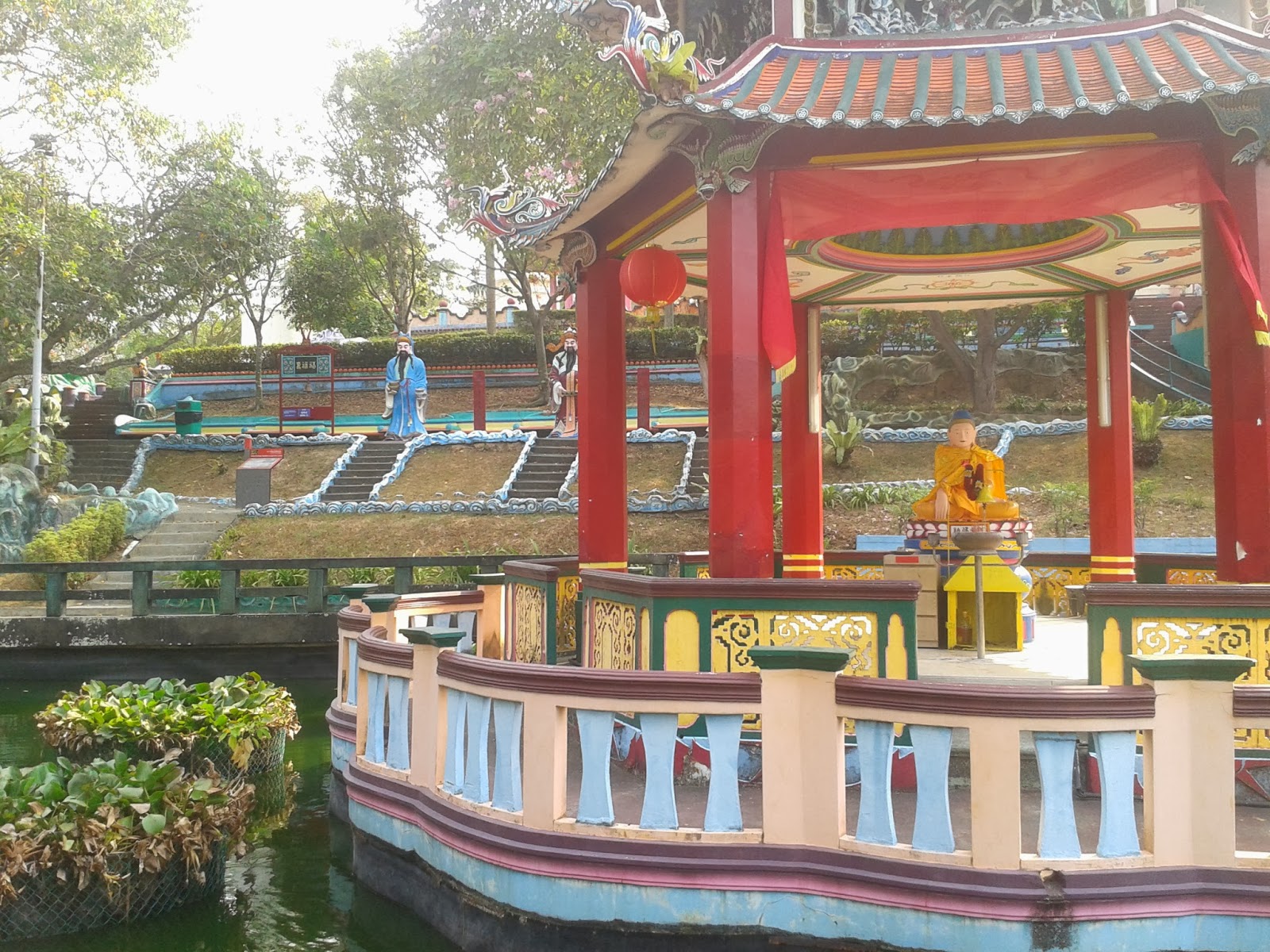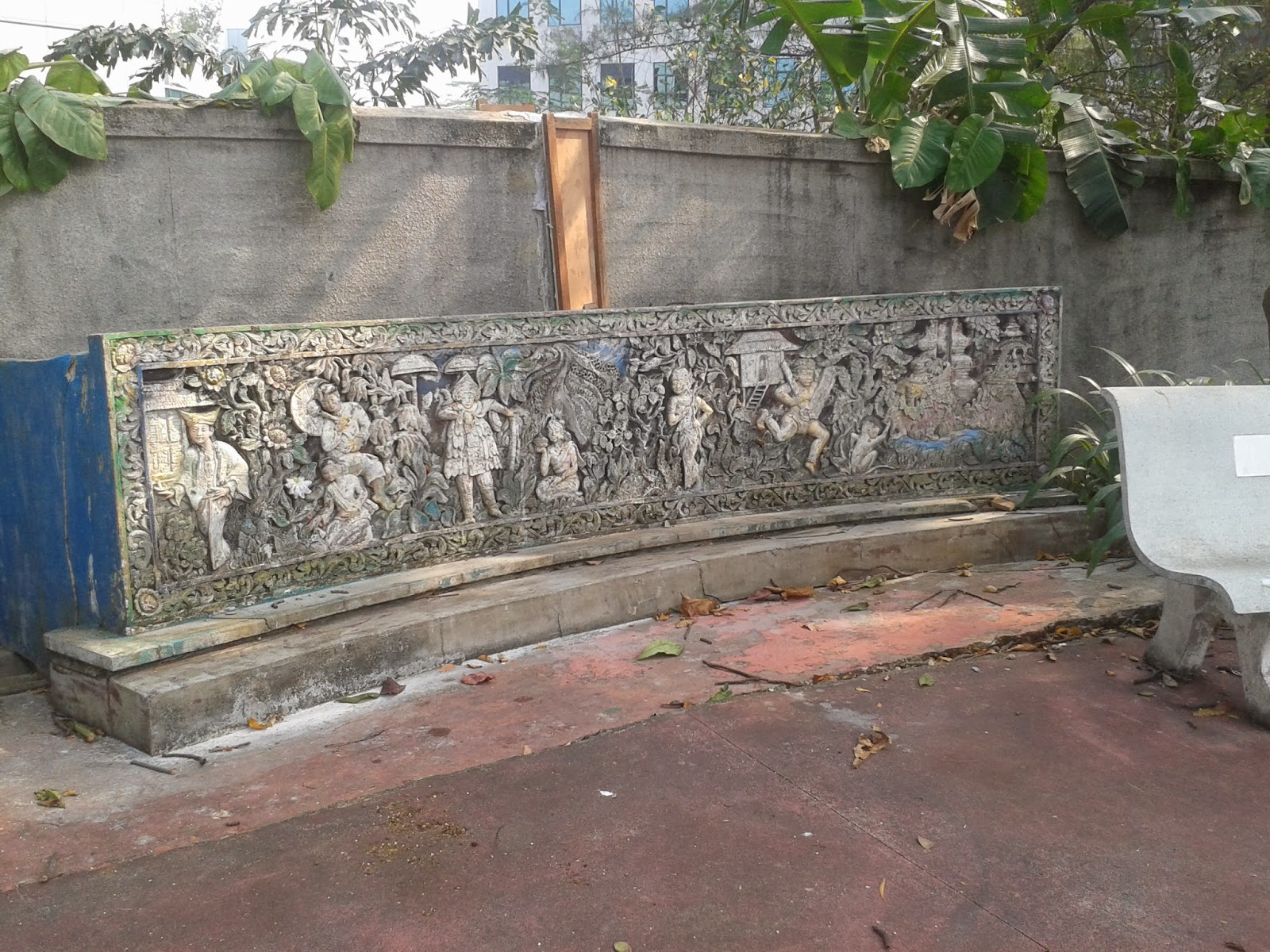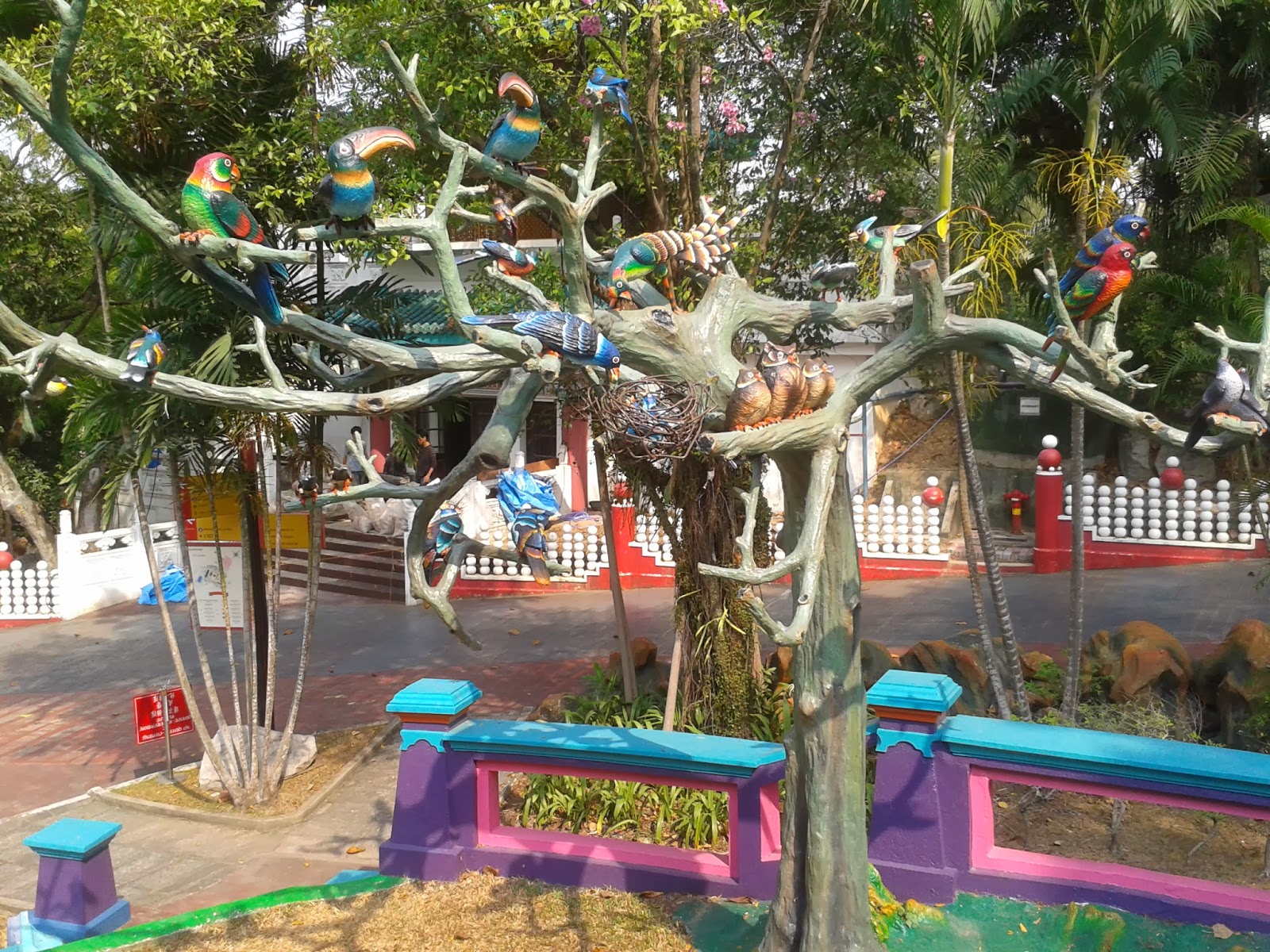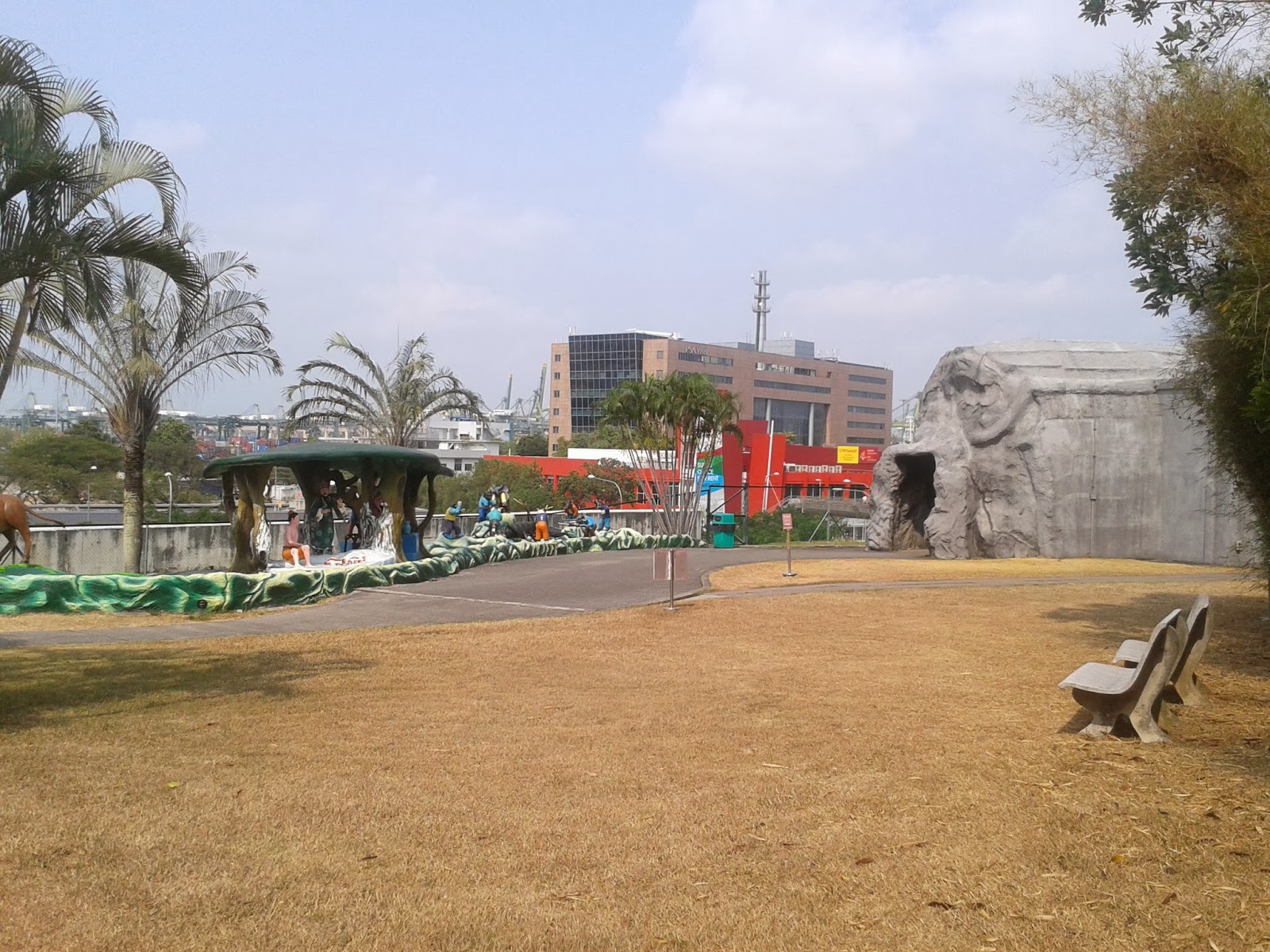I have first heard about the Villa from a blog (I don't know which one, see all the sources at the end). Then I have researched it, and found more and more intriguing details about it: it is a bizarre cultural theme park, Singapore is not all glitzy malls and manicured lawns, it has a dilapidated side as well. Other words to describe it: out of place, perplexing, gory, somewhat gaudy, mystical, source of nightmares, but also: fond memories, a bit run down, fascinating, unique, artistic statues, stories of legends and folklore, our country's heritage... So I had to see it for myself.
Haw Par Villa (虎豹別墅,Hǔ Bào Biéshù) is a theme park, on the south shore of Singapore (originally right on the sea, now looking on the Pasir Panjang terminal on reclaimed land). It contains over 1,000 statues and huge dioramas, showing scenes from Chinese mythology, folklore, legends, history and Confucianism. It was built in 1937, by Burmese-Chinese entrepreneur and philanthropist Aw Boon Haw (1882-1954) for his brother Aw Boon Par (1888-1944). Their father, Aw Chu Kin (?-1908), had travelled from China, through Singapore and Malaysia, to Burma (Myanmar) and settled there. He had three sons: Boon Leng (Dragon), Boon Haw (Tiger) and Boon Par (Leopard). And he invented a herbal ointment or heat rub called Tiger Balm. The brothers have made their fortune through this balm (hence the original name of the Villa, Tiger Balm Gardens). As the richest man in Rangoon, Boon Haw has migrated to Singapore in 1920, to expand his business. He was very successful, so he soon expanded his business into publishing and banking as well. Boon Haw acquired a hilly piece of land on the sea for US$1.95m to build a park, dedicated to his brother, to promote traditional Chinese values and family harmony, through morality tales, and a villa for himself and his brother. Entry was for the people. The gardens were badly damaged during the Japanese occupation, and his beloved brother Boon Par has passed away in 1944, so Boon Haw demolished the villa, but restored the gardens. After his death in 1954, a nephew, Aw Cheng Chye has created "international corners", in the corners of the park, based on his visits abroad. Finally the park has fallen into disrepair. The state has taken over, had incurred huge losses on high entrance fees. Now entrance is again free, and there are restoration works ongoing.

The important tigers.
And finally the entrance (from the back, because this side had better light).
Sumo wrestlers ("out of place", check)
(1m tall owl??? - "bizarre", check)
Statue of Liberty. (Wait, what? Statue of Liberty?! - "out of place", check!)
Tombs of the parents.
Tiger Balm Gardens. ("Dilapidated", check)
Moralistic dioramas (e.g., Friendship & loyalty, Determination, loyalty & hard work)
Living Buddha ("gory", check)
Orangutan/men
Kangaroo, ostrich, kiwi (?) - on the site of the demolished villa.
International garden. I think :)
Signature pond, waterless! (in the shape of the sign Aw)
Dioramas of the Journey to the West
The tombs of the two brothers Aw.
"Gaudy", check!
The only thing remaining of the brothers' living arrangement:
And the villa.
Entrance to the really gory and violent section of the park (in theory this is not for free, but there was no cashiers desk or anybody to collect money).
So this part of the park is the source of nightmares (check). "The dioramas in the Ten Courts of Hell illustrate the extremely specific punishments for different sins in extremely gruesome detail. E.g., cursing gets you thrown on a hill of knives, being ungrateful to your elders gets your heart cut out, prostitutes are drowned in a pool of blood." And so on, and on, and on...
You've been warned!
No, this is still the entrance :)
Ok, here we go.
Still only on the way. But the next ones are already the stages or courts of hell.
This is at the very back of the park. You can see the terminal in the background.
And finally, there is a shrine.
And a theater.
Bizarre and gaudy? Check & check!!!
Sources: here, here, here, here, here, here,















































































































